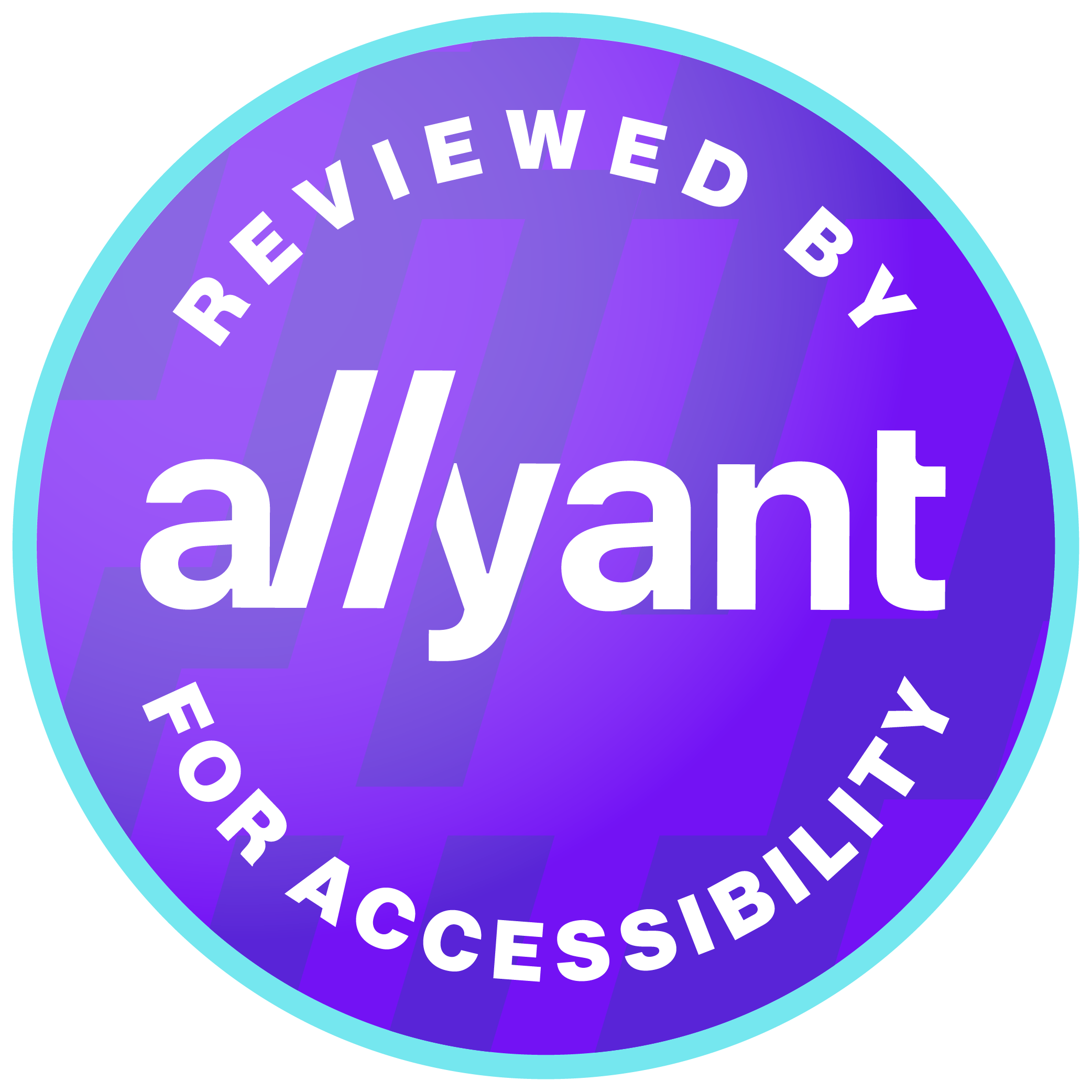With the U.S. Department of Justice finalizing a new rule under Title II of the Americans with Disabilities Act to enhance web and mobile application accessibility for people with disabilities, the imperative for digital accessibility has intensified. This DOJ rule mandates that state and local governments ensure their digital content is accessible, encompassing a broad range of public services accessed through the web and mobile platforms.
Furthermore, Section 508 has documented the requirement for federal agencies to develop and publish an Accessibility Statement on all public-facing websites.
Allyant is poised at the vanguard, ready to navigate organizations through the complex task of developing an Accessibility Statement.
What is an Accessibility Statement?
An Accessibility Statement is a public commitment to digital accessibility for individuals with disabilities. It’s an active plan that narrates your journey toward an inclusive digital space.
Once published, this statement becomes an enforceable pledge, where inaccuracies can expose your organization to lawsuits and in some cases, fines. This underscores the necessity for mapping out a clear and honest plan that your organization will work towards in your Accessibility Statement.
Essential Components of an Effective Accessibility Statement
Your Accessibility Statement should encompass the following:
- Accessibility Assistance: Specify clear methods for users to seek assistance or report accessibility issues, ensuring that contact details are readily accessible. For instance, we consult our clients and include a phone number and email that is actively monitored like any other customer support channels. Additionally, of course, it is critical that these support links are accessible with proper mark-up for a user leveraging assistive technology.
- Commitment to Inclusivity: Detail your organization’s commitment to fostering a positive and inclusive customer experience, recognizing the use of assistive technologies in testing your digital properties, and the goal of seamless accessibility.
- Proactive Actions and Ongoing Effort: Illustrate your organization’s proactive and ongoing steps to improve website accessibility, signifying a dedication to continual enhancement. Accessibility is not a one-and-done project, and outlining how your team will continually monitor and test for accessibility as both your digital properties and global standards change is both important to present and honor through internal accessibility processes.
- Invitation for Feedback: Openly invite user feedback on accessibility, showcasing a commitment to ongoing improvement and responsive engagement. It is important to acknowledge that no website is perfect, and even the strongest forms of proactive accessibility testing can miss things. By empowering your users to contact you with challenges or accessibility barriers, you will outline your commitment to fostering inclusivity of all digital touchpoints.
- Enforceability and Transparency: Acknowledge the enforceable nature of your Accessibility Statement, reflecting accurately on your current and aspirational accessibility practices. It is also important to consider realistic efforts; for example, we advise our clients against making guarantees such as having a “fully WCAG 2.2 AA compliant” website when this is potentially impossible to achieve—even with the most stringent manual and automated accessibility practices in place. Digital environments are constantly evolving, and even the most accessible and usable experiences may not be perfect.
Addressing Placement Myths: Where should I put the Accessibility Statement on my website?
A common misconception (specifically because this is demanded in many digital accessibility settlements by a particular high-volume plaintiff) is that Accessibility Statements must be placed in the website header or be the first focusable tab link.
However, the true priority is ensuring accessibility and ease of discovery for all users. The statement should be prominently placed where it is most accessible and convenient for users, debunking the myth that header placement is required. This flexibility supports the goal of making your website as user-friendly and inclusive as possible.
Additionally, the U.S. Federal Government confirmed this thought process and best practice within M-23-22, released in September of 2023. In particular, they outline that this link should be placed in the footer of the website, which has long been our recommendation for Allyant clients.
5 Key Requirements Following OMB M-24-08 Guidelines
Before, there was limited information about confirming our long-standing best practices, especially at the government and regulation level since WCAG does not require an accessibility statement. However, the recent OMB M-24-08 memorandum provides a detailed framework for what federal agencies must include in their Accessibility Statements. This sets a standard that organizations striving for excellence in accessibility can adopt.
- Comprehensive disclosure of accessibility standards and limitations: Explicitly state the accessibility standards your site adheres to, acknowledging any known limitations and offering alternative access solutions where necessary.
- Clear contact information for accessibility oversight: Provide the contact details of the individual responsible for overseeing your accessibility efforts, enhancing trust through transparency. For non-government entities that are not required to have a 508 Coordinator, as outlined above, we recommend including the contact information for a frequently monitored customer service phone number and email (such as info@).
- Public feedback mechanism: Establish a robust mechanism for collecting and responding to public feedback on accessibility, setting clear expectations for response times and remediation efforts.
- Instructions for accessibility complaints: Offer clear instructions for lodging formal complaints regarding accessibility, ensuring these procedures are easily distinguishable from general feedback mechanisms.
- Details on reasonable accommodations and telecommunications relay services: Include information on how individuals can request reasonable accommodation or utilize telecommunications relay services, facilitating greater accessibility.
Leveraging the Allyant Badge
The “Reviewed by Allyant” badge is more than a symbol; it’s a mark of your commitment to accessibility verified by Allyant. This includes a commitment to live-user testing, ensuring a WCAG-conformant website, and an equal and highly usable digital experience based on this testing, including individuals living with disabilities.
Allyant clients have the ability to display our badge prominently on their site to signal this dedication to creating an accessible digital environment.
Conclusion: A Blueprint for Digital Inclusivity
Crafting a strong and compliant Accessibility Statement is crucial for creating an inclusive digital world. By following the comprehensive guidelines of the OMB’s directive, adopting best practices, and leveraging Allyant’s expertise, organizations can demonstrate their firm commitment to accessibility. Allyant is here to help you through this important process, providing the support and tools needed to ensure that your digital content is accessible and welcoming to all users.
If you have any questions, feel free to reach out to us.




